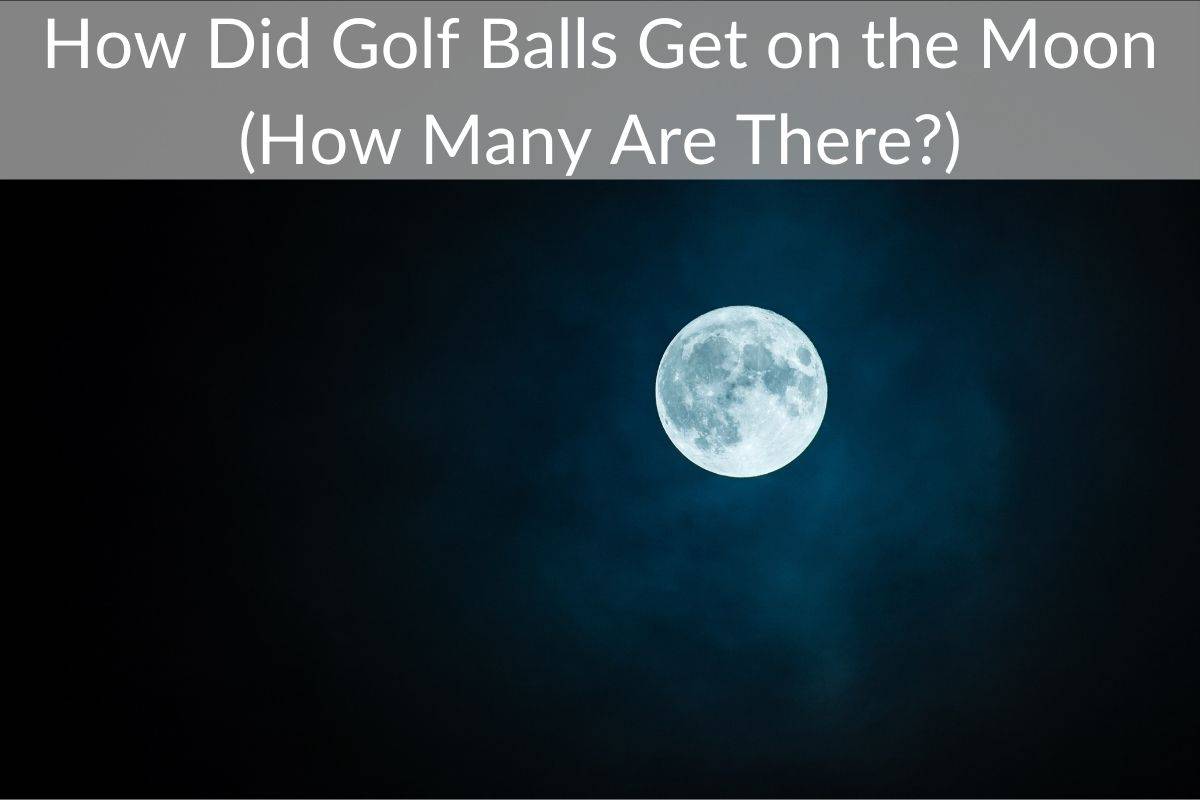Table of Contents
*This post may contain affiliate links. As an Amazon Associate we earn from qualifying purchases.
Since the dawn of civilization, we humans have looked up at the stars and wondered about, well, a lot of things.
How did the universe come into existence? Will it ever end? Are we alone out there? What is our purpose?
While all of these may be very important questions, as golfers, we may have had some other questions. For instance, some of you may have looked up at the night sky and wondered how many golf balls are on the moon.
Lucky for you, I have wondered the same thing so I found the answer. I’m about to answer all your questions right here.
While I can’t really tell you the purpose of life, I can definitely answer how golf balls got on the moon and how many are there.
There are currently two golf balls on the moon. These two golf balls were taken to the Moon by Alan Shepard during the 1971 Apollo 14 mission.
No, they didn’t land there because of an inhuman slice by Thanos and the Infinity Stones.
Shepard is the first American to be launched into space and, consequently, the fifth person to set foot on the moon. However, Shepard’s most impressive achievement was that he was the first (and only) man to have played golf outside the earth’s atmosphere.
I will cover exactly how he did that in the rest of this article.
Smuggling Golf Balls Into Space
As the story goes, Shepard smuggled a 6-iron and two golf balls onto the ship that was supposed to take him into space. When he finally made it to the moon, he started collecting rock samples to take back to Earth.
This is when he creatively attached his 6-iron club head onto the sample collector and mentioned his feat in the mission’s official transcript.
In this mission transcript, Shepard explained to Houston that, in his hand, he was holding the contingency sample return that had a genuine 6-iron attached on the bottom. Also, he also pointed out that, in his left hand, he was holding a white ball that was all too familiar to Americans back home.
The astronaut continued to explain that because of the spacesuit’s stiffness, he would only be able to swing his makeshift golf club with one hand. Edgar Mitchell, another astronaut on the mission, noted that Shepard had hit more dirt than golf balls on his first swing. On his next swing, even Houston acknowledged the slice, even though we highly doubt that Shepard had brought a scorecard.
On his third swing, the space club had finally connected, and the first golf ball floated forward along a low trajectory. Not satisfied with the result, Shepard dropped another ball, missed the ball on his first swing, and finally had it floating up and away.
In conclusion, the Apollo mission left two golf balls behind on the Moon, and they are still somewhere up there to this day. Of course, Shepard brought back the 6-iron, which is now on display for visitors at the U.S. Golf Association Hall of Fame in New Jersey.
The story gets even better. The entire show that was put on by Shepard was televised and was played in color for golf fans all over the world. You can just as easily search for NASA’s copy of the video online or you can watch it below.
How Far Do Golf Balls Travel on the Moon?
Well, according to Shepard, they travel “Miles and miles and miles…” Naturally, everybody already knows how gravity works by watching all those movies about space and that Shepard wasn’t light-heartedly exaggerating.
But if you really want to know how far they can go in space, you’re going to want to read what some experts have to say.
Only a couple of months ago, to celebrate the 50th anniversary of the Apollo 14 mission, Andy Sauders, an imaging specialist, teamed up with USGA to help answer how far a golf ball would go on the moon.
As it turns out, Saunders had been able to digitally enhance six images from the Apollo mission and put them together to create a very high-quality panoramic photo.
With the help of this image, these experts were able to calculate the distance each ball traveled on the moon when it was hit. They concluded that the first ball had traveled a distance of 24-yards, whereas the second ball had almost doubled the previous shot and landed 40 yards away.
That’s pretty impressive right? Especially when you consider that hitting a shot from the moon’s surface is quite like giving it your best from a bunker on Earth. As Saunders has explained himself, the surface of the Moon can be described as a giant, rock-strewn, and unraked bunker.
What’s more, there is a lot less gravity on the moon to help keep the clubhead down. Therefore, you will be able to produce very little speed off the clubhead than you are used to on Earth. Sure, since there is no air resistance, the ball could travel for miles and miles but good luck having a nice scorecard while you’re wearing a spacesuit.
Final Thoughts
Yes, golf is a tough game but playing golf in outer space is a whole new ball game. Also, you may have heard the saying that not everything that goes up must come down.
This is where astronauts have left behind several souvenirs for martians and future generations to find, including a javelin, a family portrait, 5 U.S. flags, a golden olive branch, and even golf balls.
We’ve already discussed how these golf balls got to the moon and that two of them are waiting for another space golfer to try his luck and beat Shepard’s record. Well, since you’re an up-and-coming golfer, all you need to do is to wait for Virgin Galactic or SpaceX to come up with a shuttle launch for civilians and bring along your own 6-iron.

